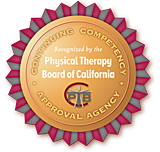
Learning The Method
MNRI® Introduction to Reflex Integration
Course Overview:
The MNRI® Introduction to Reflex Integration two-day course provides the foundation for professionals to understand the importance of primary sensory-motor reflex pattern maturation, why a reflex might be poorly integrated, the impact a non-matured reflex can have, and how MNRI® techniques are designed to integrate these reflexes. Primary sensory-motor reflex patterns emerge along a predictable developmental continuum, with each successive reflex emerging to secure a child’s survival and protection as his system mature and advances. When adequately engaged, each reflex anchors neurologically more deeply a physiological, emotional and psychological sense of security, freeing an infant to focus on exploring, learning, and fully advancing through all stages of reflex maturation which are required for life skills. It is through this complete integration process that reflex patterns form the foundation for related sensory-motor developmental milestones (sitting up, crawling, walking, etc) for each of us to reach our full potential over time, anchoring emotional and behavioral regulation, and advancing motor, communication, and cognitive learning. Congenital disorders or traumatic events that occur in utero, at birth, or anytime after birth can interrupt the activation, maturation and integration of a primary sensory-motor reflex pattern. Depending upon the number of reflexes impacted and the maturational deficits of each impacted reflex, a broad spectrum of disorders and life challenges can occur.
This class has been called “The Missing Link” by many Occupational, Physical, Speech and Massage Therapists, and Parents
Learning Objectives:
Upon successful completion of the 2-day, 16-hour MNRI® Introduction to Reflex Integration course participants will:
- Describe the Masgutova Neurosensorimotor Reflex Integration process as the basis for successful development for proper functioning and support of learning processes and self-regulation.
- Explain the definition of a reflex and reflex pattern
- Describe the concept of reflex integration
- Explain the effects of a non-integrated reflex on the brain-body system.
- Describe how a reflex is a response to a specific stimulus and how it affects motor responses and the nervous system.
- Explain how stress and trauma affect the neurosensorimotor response of a reflex.
- Explore how a matured, integrated reflex can protect an individual and improve stress resilience and protection.
- Demonstrate and define the Hand/Arm Reflex Patterns for Robinson Hands Grasp, Hands Pulling, Hands Supporting, Babkin Palmomental (Palm-Mouth).
- Explain the effective integrative exercises for Robinson Hands Grasp, Hands Pulling, Hands Supporting, Babkin Palmomental (Palm-Mouth).
- Demonstrate and define the Foot/Leg Reflex Patterns for Babinski, Foot Tendon Guard, Leg Cross Flexion-Extension, Automatic Gait and Bauer Crawling.
- Explain the effective integrative exercises for Babinski, Foot Tendon Guard, Leg Cross Flexion-Extension, Automatic Gait and Bauer Crawling.
- Demonstrate and define the Core or Gross Motor Coordination Reflex Patterns for Spinal Galant, Spinal Perez, Trunk Extension, Bauer Crawling.
- Explain the effective integrative exercises for Spinal Galant, Spinal Perez, Trunk Extension, Bauer Crawling.
- Demonstrate and define the Reflex Patterns for Trauma, Protection & Survival including Moro Embrace, Fear Paralysis, Hands Supporting.
- Explain the effective integrative exercises for Moro Embrace, Fear Paralysis, Hands Supporting.
- Demonstrate and define the Reflex Patterns for Emotional Stability, Fear, and Depression including Bonding, Spinal Perez, Fear Paralysis, Moro, Trunk Extension, and Landau.
- Explain the effective integrative exercises for Bonding, Spinal Perez, Fear Paralysis, Moro, Trunk Extension, and Landau.
- Demonstrate how these individual corrective programs can be used to enhance overall emotional, motivational, cognitive and motor challenges in a daily practice.
Course Agenda:
Day 1
Hour 1: Movement as basis of Natural Development
Hours 2-3: Definition of a reflex and reflex pattern
Lunch 1 hour
Hour 4: Effects of a non-integrated reflex
Hours 5-7: Reflexes
Hour 8: Hand/Arm Reflex Patterns
Day 2
Hour 1: Foot/Leg Reflex Patterns
Hours 2-3: Core or Gross Motor Coordination Reflex Patterns
Lunch 1 hour
Hours 4-5: Reflex Patterns for Trauma, Protection, and Survival
Hours 6-7: Reflex Patterns for Emotional Stability, Fear, and Depression
Hour 8: Summarize course activities




